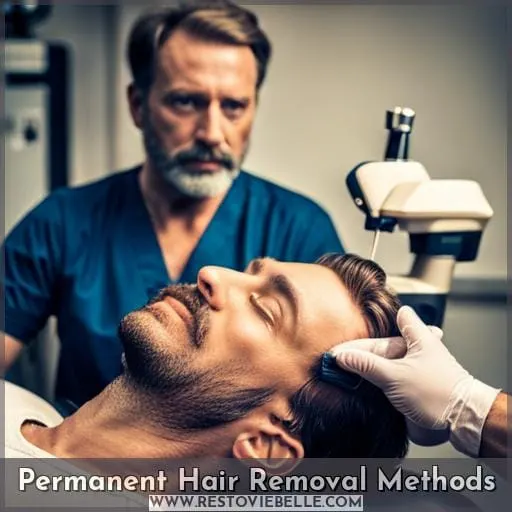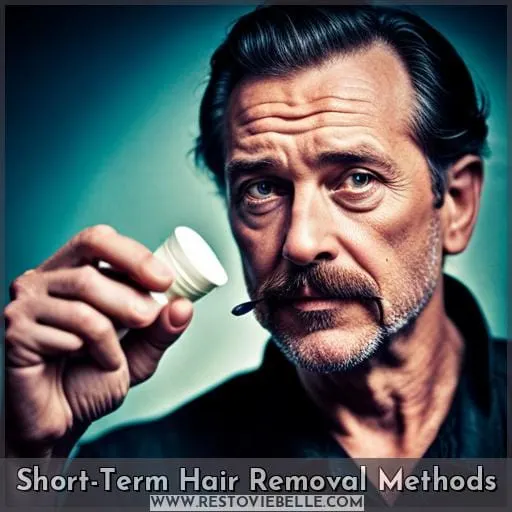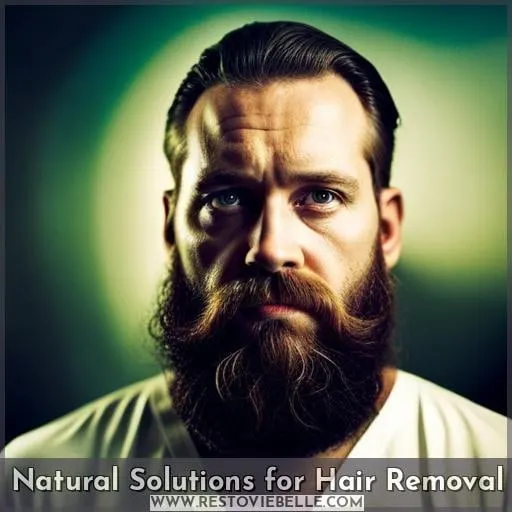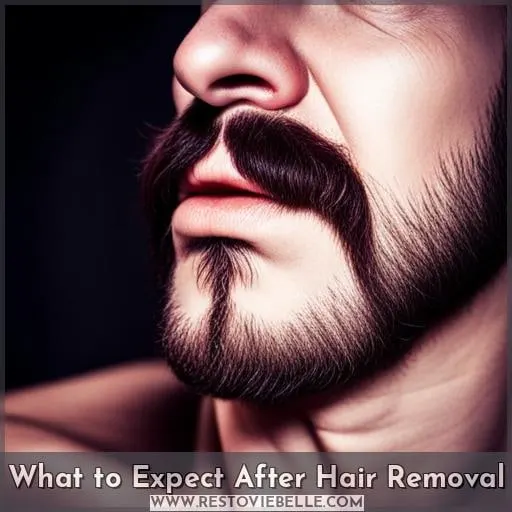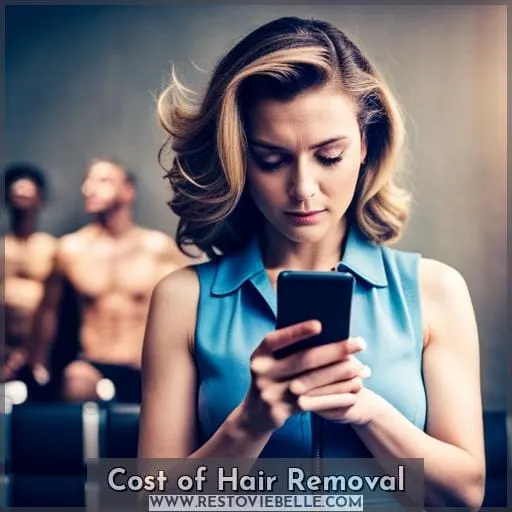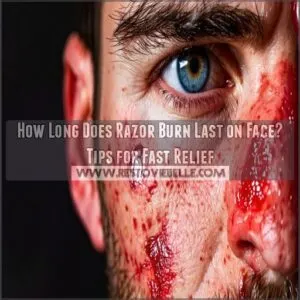This site is supported by our readers. We may earn a commission, at no cost to you, if you purchase through links.
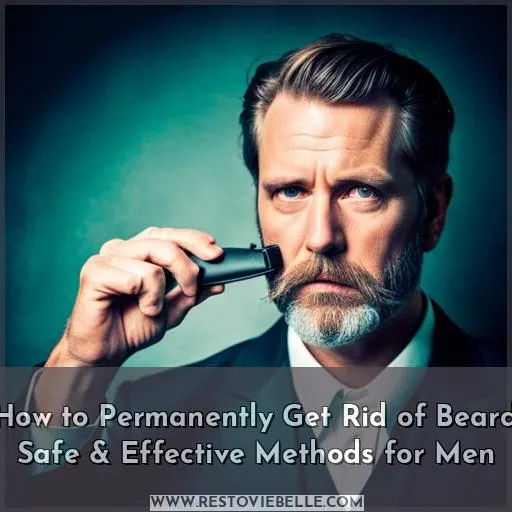 Tired of your beard?
Tired of your beard?
You’re not alone. Millions of men struggle with unwanted facial hair. Luckily, there are a number of safe and effective methods for permanently getting rid of your beard.
Table Of Contents
- Key Takeaways
- Permanent Hair Removal Methods
- Short-Term Hair Removal Methods
- Natural Solutions for Hair Removal
- Safety Considerations
- Safety Considerations**
- * Do your research. Make sure you understand the risks and benefits of each hair removal method before you decide which one is right for you.
- * Talk to your doctor. If you have any health conditions
- talk to your doctor before you start any hair removal method.
- * Start slowly. If you are new to hair removal
- start with a small area and see how your skin reacts
- What to Expect After Hair Removal
- When to See a Doctor
- Cost of Hair Removal
- Frequently Asked Questions (FAQs)
- Conclusion
Key Takeaways
- Electrolysis is a permanent hair removal method that destroys hair follicles.
- Laser hair removal is a permanent hair removal method that targets pigment in hair follicles.
- Chemical depilation is a short-term hair removal method that weakens keratin in hair.
- Waxing is a short-term hair removal method that removes hair from the root.
Permanent Hair Removal Methods
Permanent hair removal methods are more expensive and time-consuming than temporary methods, but they can provide long-term or permanent results. Two popular options for permanent hair removal are electrolysis and laser hair removal.
Electrolysis is a method that uses a tiny needle to deliver an electrical current to the hair follicle, effectively destroying it. This process requires multiple follow-up appointments as each individual follicle needs to be treated separately.
While electrolysis can be done anywhere on the body, it may cause some pain and redness during treatment. It’s important to note that rare side effects such as scarring, infection, or keloids may occur.
Laser hair removal works by targeting the pigment in the hair follicles with high-heat lasers, damaging them so new hairs can’t grow back easily. Multiple sessions are typically needed for best results since not all hairs will be in their growth phase at once.
The cost of laser treatments can range up to $250 per session depending on various factors like location and clinic reputation.
While both techniques have proven effectiveness in achieving long-term or even permanent reduction of unwanted facial or body hair growth patterns; individuals should consider potential side effects including skin irritation/redness before undergoing these procedures.
Short-Term Hair Removal Methods
If you prefer a temporary solution for removing facial hair, there are several short-term hair removal methods that can help.
One option is chemical depilation, which involves using an over-the-counter gel or cream to weaken the protein in your hair called keratin, causing it to fall out easily. While this method doesn’t target the hair follicle and has no long-lasting effects, it can provide quick results without much time investment.
Another popular method is waxing. Waxing removes hair from the root and typically lasts around 3-4 weeks. It can be done at home or by a professional but may cause some pain during the process.
Professional tweezing is another effective short-term option for facial hair removal that provides longer-lasting results compared to shaving or tweezing on your own. However, it tends to be more costly due to ongoing appointments with professionals.
For those looking for alternative options, honey waxing and epilators are also worth considering as they offer similar effectiveness in removing facial hairs temporarily.
Ultimately, when choosing a short-term method of facial Hair Removal like these mentioned above (chemical depilation,waxing,tweezers,epilator,honey wax), consider factors such as side effects,such as skin irritation,in addition,time,cost,and desired results before making your decision.
Natural Solutions for Hair Removal
In addition to short-term hair removal methods, there are also a number of natural solutions for hair removal that you can try at home. These methods may help remove hair or limit hair growth, and they’re generally less expensive and less invasive than traditional hair removal methods.
Some natural solutions for hair removal include:
- Sugar waxes and scrubs:
- Sugar waxes are made from natural ingredients, such as sugar, lemon juice, and turmeric.
- They can be used to remove hair from all areas of the body, including the face.
- Sugar scrubs can help exfoliate the skin and promote hair removal.
- Honey is a natural humectant, which means that it draws moisture to the skin.
- It can also help to soften and condition the hair, making it easier to remove.
- Honey can be used as a natural hair removal cream or as a mask to help reduce the appearance of facial hair.
- Spearmint tea is a natural diuretic, which means that it helps to increase urine output.
- Drinking spearmint tea twice a day can help to limit the growth of facial hair.
- Exfoliating the skin can help to remove dead skin cells and promote hair growth.
- This can make it easier to remove hair with other methods, such as shaving or waxing.
- Essential oils, such as tea tree oil and lavender oil, can help to reduce inflammation and irritation.
- They can also help to soften the hair and make it easier to remove.
Safety Considerations
When it comes to permanently getting rid of your beard, safety should be a top priority.
Before you embark on any hair removal method, it’s essential to do your research and understand the risks and benefits involved.
It’s also important to consult with your doctor if you have any underlying health conditions that may affect the choice of hair removal method.
Finally, starting slowly by testing a small area can help gauge how your skin will react before proceeding further.
Safety Considerations**
When considering the safety of hair removal methods, it’s important to:
- Do your research
- Talk to your doctor
- Start slowly
- Watch for signs of irritation
* Do your research. Make sure you understand the risks and benefits of each hair removal method before you decide which one is right for you.
Before you decide on a hair removal method, do your research to understand the risks and benefits.
| Hair removal method | Cost | Effectiveness | Pain | Side effects | Time | Commitment | Aftercare |
|---|---|---|---|---|---|---|---|
| Shaving | Low | Low | Low | Minor irritation | Quick | Low | Minimal |
| Tweezing | Low | Low | Moderate | Minor irritation | Quick | Low | Minimal |
| Waxing | Moderate | High | High | Moderate irritation | Moderate | Moderate | Some |
| Epilating | Moderate | High | High | Moderate irritation | Moderate | Moderate | Some |
| Depilatory creams | Low | Low | Low | Minor irritation | Quick | Low | Minimal |
| Topical creams | Low | Low | Low | Minor irritation | Quick | Low | Minimal |
| Laser hair removal | High | High | Low | Minor irritation | Long-term | High | Extensive |
| Electrolysis | High | Permanent | High | Moderate irritation | Long-term | High | Extensive |
* Talk to your doctor. If you have any health conditions
- Talk to your doctor before you start any hair removal method. Some methods may not be suitable for people with certain health conditions.
talk to your doctor before you start any hair removal method.
If you have any health conditions, talk to your doctor before you start any hair removal method. Some methods may not be safe for you, and your doctor can help you choose the best option.
* Start slowly. If you are new to hair removal
- Start with a small area and see how your skin reacts before moving on to larger areas.
- Avoid waxing on sensitive skin.
- Use a warm compress.
- Apply a moisturizer.
- Don’t shave against the grain.
- Exfoliate before hair removal.
start with a small area and see how your skin reacts
Start with a patch test to test your skin’s reaction to a hair removal method before committing to a full-fledged routine.
What to Expect After Hair Removal
After hair removal, you can expect some redness, swelling, and irritation. This is normal and should go away within a few days.
To help reduce irritation, you can apply a cold compress or ice pack to the area.
In some cases, you may experience ingrown hairs or scarring.
Ingrown hairs occur when the hair follicle becomes blocked and the hair grows back into the skin.
Scarring is rare, but it can occur if the hair removal process is done incorrectly or if you have a skin condition that makes you more susceptible to scarring.
If you experience any of these symptoms, it’s important to see a doctor. They can help you treat the problem and prevent further complications.
When to See a Doctor
You should see a doctor if you experience any of the following after hair removal:
- Pain that’s severe or doesn’t go away
- Swelling, redness, or inflammation
- Skin irritation or a rash
- Infection
- Scarring
It is also important to see a doctor if you’re considering permanent hair removal methods, such as laser hair removal or electrolysis. These methods can be effective, but they can also come with some risks, such as pain, side effects, and scarring. Your doctor can help you determine if these methods are right for you and can recommend a safe and effective treatment plan.
Cost of Hair Removal
The cost of hair removal can vary depending on the method you choose, the area of your body you want to treat, and the number of sessions you need.
- Shaving is the most affordable option, but it’s also the least effective.
- Depilatory creams and waxing are more expensive than shaving, but they’re also more effective.
- Professional tweezing and waxing can be even more expensive, but they’re often more precise and less painful than at-home methods.
- Laser hair removal and electrolysis are the most expensive hair removal methods, but they’re also the most effective.
Aftercare Tips
After hair removal, it’s important to follow these aftercare tips to help prevent infection and irritation:
- Wash the treated area with a gentle cleanser and warm water.
- Pat the area dry with a clean towel.
- Apply a thin layer of moisturizer to the area.
- Avoid sun exposure to the treated area.
- Don’t pick or scratch the treated area.
References
- American Academy of Dermatology: Hair Removal
- Mayo Clinic: Hair Removal
Cost of Hair Removal
The cost of hair removal varies depending on the method you choose, the area of your body you want to treat, and the number of treatments you need.
Laser hair removal is the most expensive option, with costs ranging from $200 to $500 per session.
Electrolysis is also a costly option, with costs ranging from $150 to $300 per session.
Prescription creams can cost up to $50 per month, and professional tweezing and waxing can cost around $10 per session.
Natural solutions for hair removal are the most affordable option, with costs ranging from $0 to $20.
Frequently Asked Questions (FAQs)
What are the pros and cons of permanent hair removal methods?
Permanent hair removal methods include:
- Electrolysis
- Laser hair removal
- Prescription creams
- Professional tweezing and waxing.
The pros and cons of each method vary, so it’s important to do your research before choosing one.
What is the best way to remove facial hair for sensitive skin?
If you have sensitive skin, you may want to avoid methods that involve harsh chemicals or wax.
Shaving, threading, and sugaring are all good options for sensitive skin.
How long does it take for laser hair removal to work?
Laser hair removal can take several months to work, and it may require multiple sessions.
The results will last for several months or even years, but the hair may eventually grow back.
What are the side effects of electrolysis?
Electrolysis is considered a permanent solution by the FDA, but it requires multiple follow-up appointments and can cause side effects like:
- Pain
- Redness
- Scarring
- Infection
- Keloids
How much does it cost to get laser hair removal?
Laser hair removal can cost up to $250 per session, and multiple sessions are typically required for best results.
Conclusion
Wondering how to permanently get rid of your beard? There are a number of safe and effective methods available, so you can finally say goodbye to unwanted facial hair.
